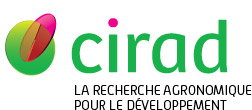Carcelle Sebastien. 2018. Os que ficam. Notas etnográficas sobre ritmos, movimentos e estrategias de sobrevivência no municipio de Serranópolis de Minas. Argumentos, 15 (2) : 54-67.
|
Version publiée
- Portugais
Utilisation soumise à autorisation de l'auteur ou du Cirad. CARCELLE_Os que ficam_Argumentos_2018.pdf Télécharger (916kB) | Prévisualisation |
Titre anglais : Those who stay. Ethnographics notes on rhythms, movements and survival strategies in the municipality of Serranópolis de Minas / Titre espagnol : Los que quedan. Notas etnográficas sobre ritmos, movimientos y estrategias de supervivencia en el municipio de Serranópolis de Minas
Résumé : Os elementos a serem apresentados ao longo do texto foram extraídos dos cadernos etnográficos de um trabalho de campo no quadro de uma pesquisa de doutorado em antropologia sobre o tema da agroecologia na região do Norte de Minas. Eles não têm outra pretensão além de trazer o ponto de vista de um francês que teve a sorte de vivenciar várias estadias de algumas semanas no município de Serranópolis de Minas. São impressões as margens do coração da pesquisa, anotações periféricas, porém, que participam de uma composition de lieu, etapa indispensável de toda relação etnográfica. Assim, o artigo traz informações sobre os ritmos cotidianos, semanais e anuais do lugar, ditados tanto pela escola como pelas migrações sazonais e as festas religiosas tradicionais. Se destaca também o impacto das distâncias e dos meios de transporte na organização da vida das pessoas que vivem nas comunidades rurais mais afastadas do centro do município. Enfim, se pretende demostrar que para conseguir ficar em um lugar afastado dos grandes centros urbanos como é o caso de Serranópolis, é preciso desenvolver estratégias de sobrevivência e de ajuda mútua, além das indispensáveis políticas públicas.
Résumé (autre langue) : The elements that I will present throughout the text were excerpted from my own ethnographic notebooks collected during my field work of my PhD research in anthropology about agroecology in the North of Minas Gerais. I have no other pretension than to present the point of view of a Frenchman who had the good fortune to experience several stays of a few weeks in the town of Serranópolis de Minas. These impressions are on the edges of the heart of this research, peripheral observations that nevertheless participate in a composition de lieu, indispensable stage of any ethnographic relation. Thus, the article provides information about daily, weekly and annual rhythms of the place, dictated by the school as well as the seasonal migrations and the traditional religious celebrations. It also highlights the impact of distances and the availability of means of transport for the daily organization of the people living in the rural communities further away from downtown. Finally, I intend to illustrate that for them to be able to stay throughout the year in a place far from the big urban centers, they need develop strategies of survival and mutual aid, beyond the support of the indispensable public policies.
Mots-clés libres : Semi-aride, Brésil, Migrations, Agroécologie, Movimentos, Coletivos rurais, Cotidiano, Ritmos, Redes de ajuda mútua
Auteurs et affiliations
-
Carcelle Sebastien, CIRAD-ES-UMR ART-DEV (FRA)
 ORCID: 0000-0001-6031-9847
ORCID: 0000-0001-6031-9847
Source : Cirad-Agritrop (https://agritrop.cirad.fr/614486/)
[ Page générée et mise en cache le 2025-09-09 ]




